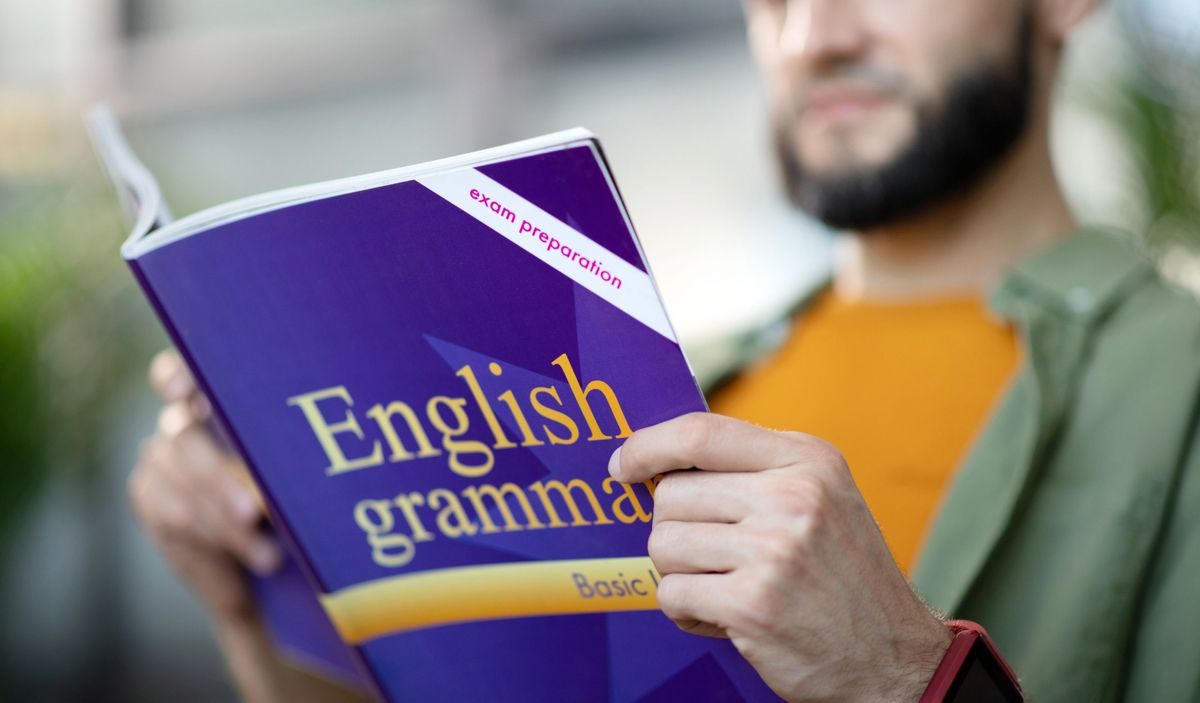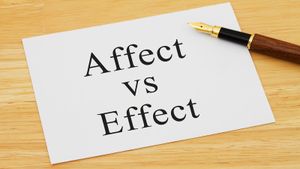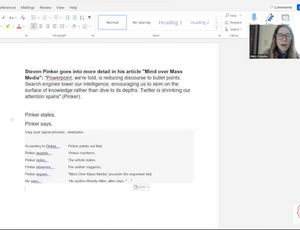Grammar is the structural framework that governs how words and phrases come together to create meaningful sentences in a language. It's essentially the set of rules and conventions that allow us to communicate effectively. Understanding grammar is like having the key to unlock the beauty and power of a language.
The Importance of Learning Grammar
Learning grammar isn't just about adhering to rules; it's about mastering a fundamental skill that helps you express yourself clearly and accurately. Here's why it's so crucial:
- Clear Communication: Grammar ensures that your ideas are conveyed in a way that others can easily comprehend.
- Professionalism: Proper grammar is often associated with professionalism. Whether you're writing a resume, a report, or an email, using correct grammar demonstrates your competence.
- Confidence: Knowing grammar boosts your confidence, making you more comfortable in both written and spoken communication.
- Effective Writing: For writers, grammar is a tool to create powerful, engaging, and persuasive content.
1. Nouns
Nouns are the building blocks of sentences, representing people, places, things, or ideas. They can be classified into common nouns, proper nouns, and more.
Common Nouns:
- Common nouns refer to general, everyday items and concepts.
Proper Nouns:
- Proper nouns name specific individuals, places, or things.
Collective Nouns:
- Collective nouns refer to groups of people or things.
Abstract Nouns:
- Abstract nouns represent ideas, emotions, or qualities.
2. Verbs
Verbs are action words that convey what the subject is doing. They can be further categorized into transitive, intransitive, and linking verbs.
Transitive Verbs:
- Transitive verbs require a direct object to complete their meaning.
- Example: "She baked a delicious cake."
Intransitive Verbs:
- Intransitive verbs do not require a direct object.
- Example: "He ran quickly."
Linking Verbs:
- Linking verbs connect the subject to a subject complement, often an adjective or noun.
- Example: "She seems tired."
3. Adjectives and Adverbs
Adjectives describe nouns, while adverbs modify verbs, adjectives, or other adverbs.
Adjectives:
- Adjectives add detail to nouns, making your descriptions more vivid.
Adverbs:
- Adverbs provide information about how, when, where, or to what degree an action is performed.
Comparative and Superlative Forms:
- Adjectives and adverbs can have comparative (-er) and superlative (-est) forms to indicate degrees.
4. Pronouns
Pronouns replace nouns to avoid repetition and maintain clarity in sentences.
Personal Pronouns:
- Personal pronouns stand in for specific people or things. In Modern English the personal pronouns include: "I," "you," "he," "she," "it," "we," "they," "them," "us," "him," "her," "his," "hers," "its," "theirs," "our," "your." Personal pronouns are used in statements and commands, but not in questions; interrogative pronouns (like "who," "whom," "what") are used there.
Reflexive Pronouns:
- Reflexive pronouns indicate that the action reflects back on the subject. The nine English reflexive pronouns are myself, yourself, himself, herself, oneself, itself, ourselves, yourselves, and themselves.
Demonstrative Pronouns:
- Demonstrative pronouns point to specific things. Demonstrative pronouns are a subset of pronouns that help us point to specific people, places, things, or ideas in a sentence. They function to identify and distinguish between objects or groups of objects in relation to the speaker or the context of the conversation. Demonstrative pronouns replace nouns and eliminate the need for repetition, making sentences more concise and clear.
Singular Demonstrative Pronouns:
This: Used to point to something close to the speaker.
That: Used to point to something farther away from the speaker.
Plural Demonstrative Pronouns:
These: Used to point to multiple things close to the speaker.
Those: Used to point to multiple things farther away from the speaker.
5. Prepositions and Prepositional Phrases
Prepositions show the relationship between nouns or pronouns and other words in a sentence.
Common Prepositions:
- Common prepositions include words like "in," "on," "under," and "beside."
- Example: "The keys are on the table."
Prepositional Phrases:
- Prepositional phrases consist of a preposition, its object, and any modifiers.
- Example: "She walked through the park."
6. Conjunctions
Conjunctions join words, phrases, or clauses to form cohesive sentences.
Coordinating Conjunctions:
- Coordinating conjunctions like "and," "but," and "or" connect words or groups of words of equal importance.
- Example: "I like tea and coffee."
Subordinating Conjunctions:
- Subordinating conjunctions link dependent clauses to independent clauses.
- Example: "Because it was raining, we stayed indoors."
7. Sentence Structure
Sentence structure defines how words are arranged to convey meaning.
Understanding how sentences are structured is essential for effective communication:
Subject and Predicate: A sentence typically has a subject (what the sentence is about) and a predicate (what the subject does or is).
Simple Sentences:
- Simple sentences consist of a single independent clause.
Compound Sentences:
- A compound sentence is a sentence that consists of two or more independent clauses (also known as main clauses) joined together by coordinating conjunctions, semicolons, or transitional words.
Complex Sentences:
- Complex sentences include an independent clause and one or more dependent clauses.
8. Punctuation
Proper punctuation enhances clarity and readability in your writing.
Commas:
- Commas separate items in a list, set off introductory phrases, and join independent clauses.
- Example: "I need to buy eggs, milk, and bread."
Apostrophes:
- Apostrophes indicate possession or contractions.
- Example: "It's a beautiful day."
Rules for Tenses in English Grammar
Tenses are crucial for indicating when an action took place:
- Present Simple: Used for habits and general truths.
- Past Simple: Indicates actions completed in the past.
- Future Simple: Discusses actions that will happen in the future.
- Present Perfect: Shows actions that began in the past and continue into the present.
- Past Perfect: Describes actions completed before another past action.
Why Learn English Grammar?
Understanding English grammar isn't just about following rules; it's about honing your communication skills. Learning grammar:
- Enhances Clarity: Proper grammar ensures your message is crystal clear, reducing misunderstandings.
- Boosts Confidence: Correct usage of grammar makes you feel more confident in your abilities.
- Improves Writing: Writers can create more compelling content with a strong grasp of grammar.
- Facilitates Learning: Learning other languages becomes easier when you have a solid foundation in grammar.
Conclusion
Mastering English grammar may seem daunting, but it's an achievable skill that can greatly enhance your communication abilities. By understanding and applying these grammar rules with the provided examples, you'll be well on your way to expressing yourself with precision and confidence in both written and spoken English. Keep practicing, and soon, these rules will become second nature, making your language skills truly shine.

Here are some frequently asked questions (FAQs) about English grammar rules:
What is the importance of English grammar?
Understanding English grammar is crucial for effective communication. It ensures that your messages are clear, accurate, and easy to comprehend. Whether you're writing a professional email or having a casual conversation, proper grammar enhances your ability to convey ideas and thoughts effectively.
What are some common grammar mistakes to avoid?
Subject-verb agreement errors: Ensure that your subject and verb match in number (singular or plural).
Misplaced modifiers: Place modifiers like adjectives and adverbs next to the words they modify.
Run-on sentences: Separate independent clauses with proper punctuation.
Apostrophe misuse: Use apostrophes for contractions and possessive forms, but not for plurals.
How do I know when to use "who" or "whom"?
Use "who" when referring to the subject of a sentence (the doer of the action).
Example: "She is the one who helped me."
Use "whom" when referring to the object of a sentence (the recipient of the action).
Example: "To whom did you give the gift?"
What are some common prepositions and their meanings?
Common prepositions include "in," "on," "at," "under," "beside," "between," and "among."
Their meanings vary depending on context. For example, "in" denotes location, while "on" often indicates surface contact.
When should I use "a" or "an" before a noun?
Use "a" before words that begin with a consonant sound.
Example: "a book"
Use "an" before words that begin with a vowel sound.
Example: "an apple"






